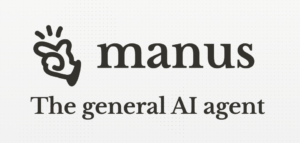Monica’s Manus — AI Development in China

WENCHANG, CHINA – MAY 29: A Long March-7 Y3 carrier rocket carrying the Tianzhou-2 cargo spacecraft … More
Manus AI: Overview and Critique
The launch of Manus AI has captured attention, similar to past AI advancements like DeepSeek and Groku. However, Manus AI isn’t particularly groundbreaking. Unlike DeepSeek, which has introduced significant improvements, Manus seems to offer only incremental advancements. The claim of autonomy is questionable—this AI primarily functions as another large language model (LLM) executing pre-programmed tasks. The main point of interest appears to be its origin in China rather than any genuine innovation it presents.
Output Quality of Manus AI
Manus AI, like other similar technologies, generates responses based on statistical probabilities drawn from its training data. If you request assistance from Manus for tasks like article writing, it will likely produce an outline or content reflective of prevailing narratives about its capabilities, often emphasizing dramatic themes such as “breakthrough” and “China’s technological supremacy.” The reality is that LLMs offer averages, not deep or original insights.
Manus might handle simple tasks, such as creating a travel itinerary, but evaluating its effectiveness can be complicated. In my experience with courses about AI product development, I emphasize the principle of a minimum viable product. Manus may suffice for basic summaries, but for complex tasks requiring full autonomy, such as travel booking, it falls short of current needs.
The Decision-Making Limitations
One of the significant hurdles for Manus AI is its inability to make sound decisions based on prioritization and agency. For example, an analysis of OpenAI’s models highlighted how AI could produce coherent outputs but often lacks the discernment to determine the most critical data points. Manus AI similarly faces this challenge, meaning its insights could be vague or flawed.
Success in Defined Workflows
AI technologies excel best in structured and specific workflows rather than broad, unstructured tasks. Companies focusing on niche applications, rather than general-purpose AI, are better positioned to create substantial value. Consider the following examples:
- Octomind: This company utilizes AI agents to automate end-to-end testing for web applications by interpreting code and simulating user interactions.
- Flank: Flank’s AI tools manage legal tasks, including document preparation, negotiation support, and compliance forms, ensuring precision in outputs.
- r2decide: This AI enhances eCommerce by generating personalized shopping advice for consumers during their purchasing journey.
These examples illustrate that when AI operates within defined parameters—such as web testing or legal assistance—it can effectively automate tasks and make decisions, leading to successful outcomes.
The Need for Human Oversight
A pivotal aspect of AI’s future development is the integration of human oversight. Despite advancements, many companies still struggle to merge AI into their decision-making frameworks successfully. There’s evidence that while AI can enhance scalability, the involvement of human judgment is irreplaceable. AI might draft reports or extract valuable insights, but without human guidance in prioritization, its output may not meet expectations.
In my AI design course, students often report that AI is useful for summarization and coding tasks; however, it struggles with guiding prioritization decisions. The need for human intervention, regardless of how sophisticated an AI tool may claim to be, remains critical.
Challenges in AI Integration
For AI to become truly transformative, it needs to integrate seamlessly with existing platforms and services. Manus’ recent demonstrations of multi-application functionality show promise, yet existing automation tools like IFTTT and Zapier only provide basic integration capabilities. Growth occurs when AI systems can blend with intricate ecosystems, much like Amazon’s Alexa is enhancing its compatibility with various tools.
Enterprise Focus Before Consumer Adoption
It’s unlikely that fully autonomous AI assistants will serve consumers effectively anytime soon. Enterprises are more likely to adopt AI solutions first due to their capacity to manage risks and returns. Leading consulting firms are already developing task-specific AI tools. The path to consumer AI is gradual; widespread adoption will not occur overnight.
AI’s True Value Lies Beyond Origin
The strength of Manus AI may not lie in its technology, but rather in its branding as a “Made in China” product. The future of artificial intelligence will depend on developing reliable and secure systems that integrate effectively into existing workflows. Companies that hone their processes and engage humans in decision-making will thrive, while those relying on flashy marketing alone are destined for obscurity.
Disclaimer: I may have investments in some companies mentioned in this article. This content is intended for informational purposes only and should not be considered a recommendation or investment advice.






